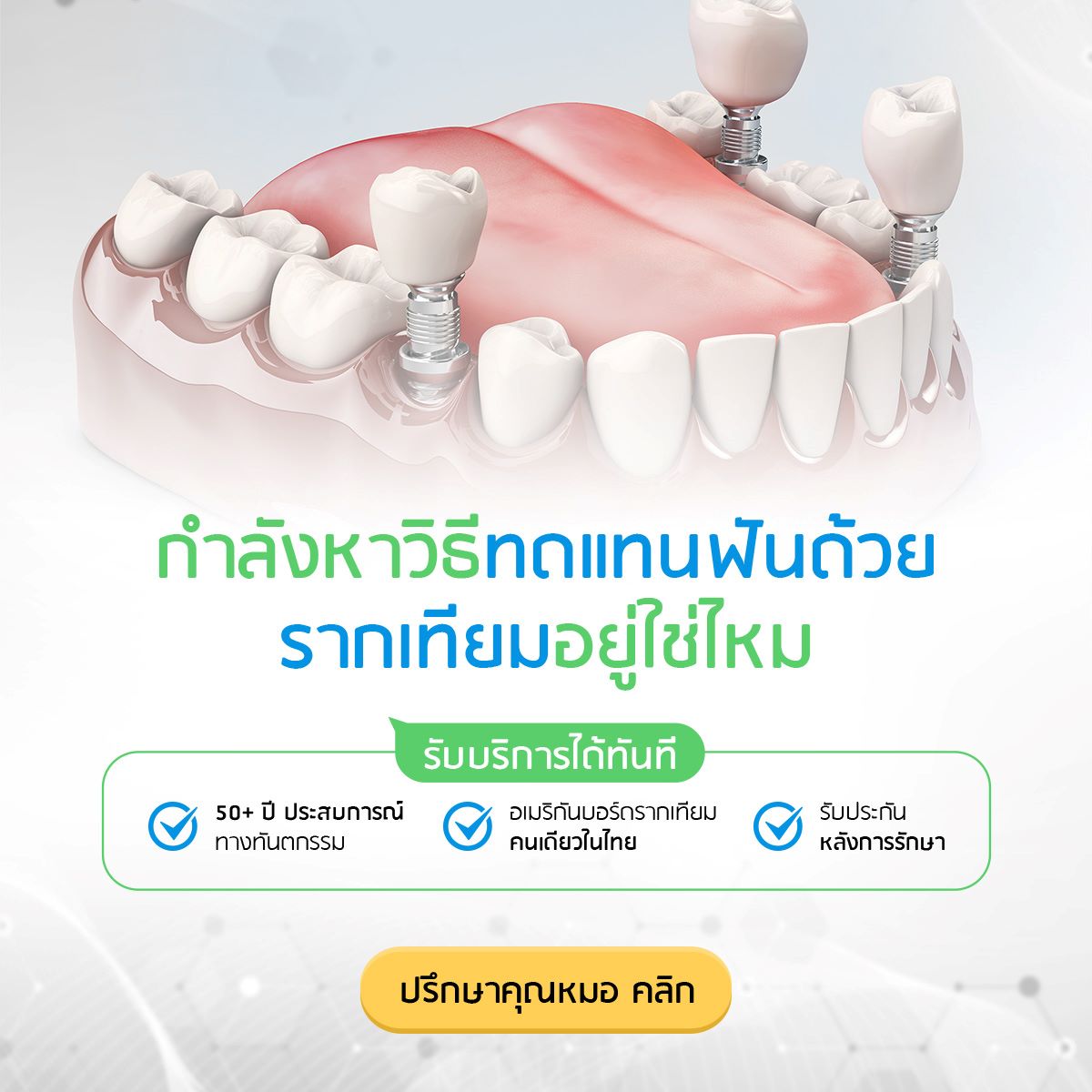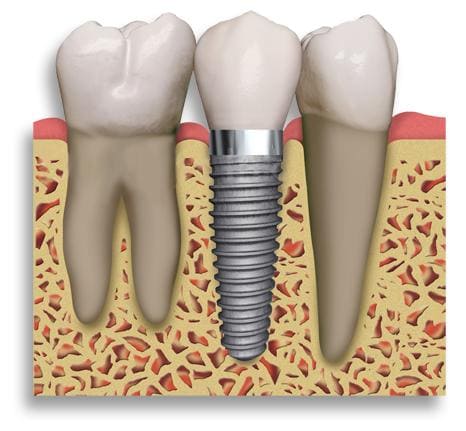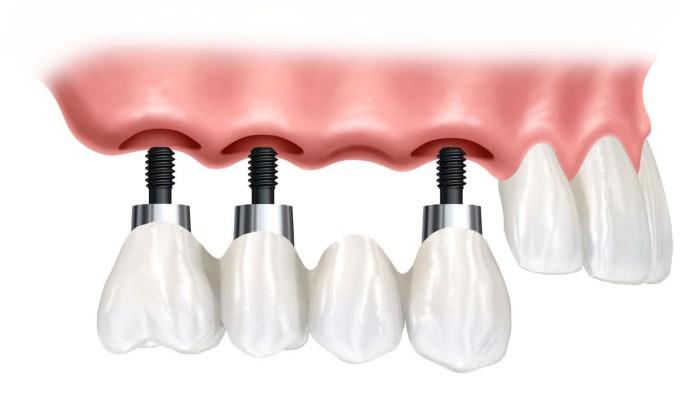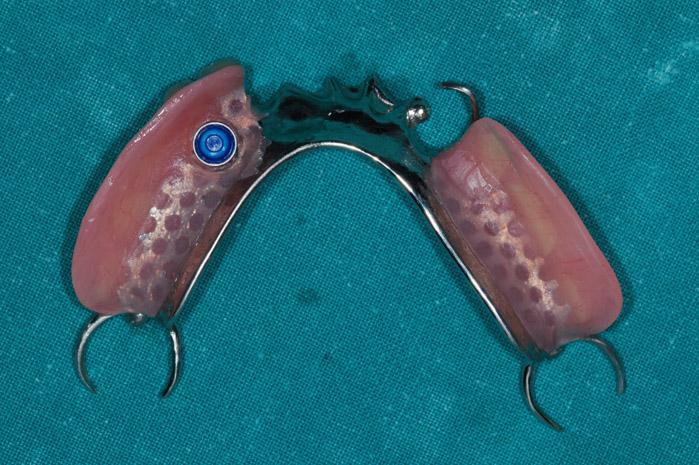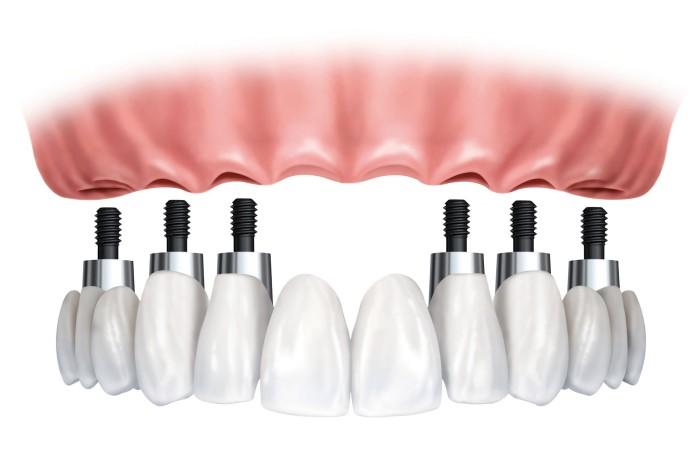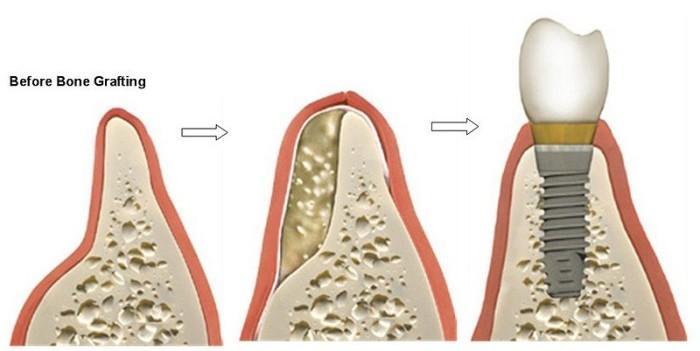Dental implants have been used to replace missing teeth. Implants are manufactured from titanium, a metal that is known to be compatible with body tissues and able to bond with adjacent bone during healing.

Why have dental implants?
Dental implants have a number of important advantages over conventional crowns, bridges and dentures:
- Implants look and feel like natural teeth.
- Improve patient’s personality and confidence
- Implants function in the same way as natural teeth and there are no difficulties with eating or cleaning the teeth.
- Good strength
- Healthy adjacent teeth do not have to be filed down to act as supports for the missing tooth or teeth. This means that they are therefore less likely to need root fillings.
- The presence of the implant maintains the structure of the bone beneath the replaced tooth, as chewing forces are transmitted through the implant to the bone and stimulate the natural process of bone renewal. This helps preserve a good appearance, both of the restored teeth and of the face.
- Dental implants can be used to give removable dentures a firm grip.
- Easily to clean and reduce the caries and periodontal problem
- Long term success rate – Research study over 50 years has been shown that if patients can clean their teeth very well more than 90%, dental implant can be used more than 20 years.
How are dental implants placed?
Grafting bone is put into the extraction sockets by implantologist. Then, it takes around 2 months for implant integration with the bone. When your gums have fully healed, your dentist will take a new impression of your mouth and make an appointment for inserting the crown or bridge over implant. In case no bone graft, treatment time approximate 2 months.
What is the success rate of dental implant?
In normal case, the success rate is around 95%. (In medical field, there is no any treatments having 100% success rate)
What are the options for implant tooth replacement?
Missing one tooth -Single Tooth Replacement
Multiple teeth missingFixed Multiple Tooth Replacement
Removable Implant-Supported Tooth ReplacementRemovable dentures are often used to replace extensive tooth, bone and gum-tissue loss, thus providing support for the facial skeleton, lip and cheeks. A new denture can have attachments that snap or clip it into place on the implants or a custom made, milled bar can be fabricated to create additional strength and support for the restoration.
Missing all teeth
Implant support full bridge
In this case, six to eight dental implants are used to replace all missing teeth.
Implant supported Full mouth denture
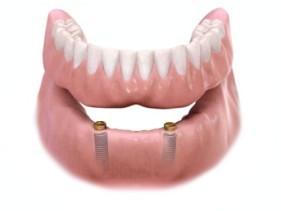 |
In this case, two to four dental implants are used to to retain a more natural biting and chewing capacity |
|
Mini-implant is used in patient having thin and small alveolar ridge. This might be alternative option to avoid bone graft, reduce treatment time and cost of treatment |
 |
Why do we need bone grafting?
Dental implant need bone support around it. However, when tooth is extracted, the bone is resorpted naturally. This cause bone ridge in some area too thin and too small for implant size. Bone grafts are carried out to increase the width and height of the jawbone at the implant site.
How to maintain the implant?
Implants do require maintenance. It is important to practice good daily oral hygiene, including brushing and flossing to control bacterial biofilm. It is also important to see your dentist and dental hygienist. Special instruments are necessary to clean dental implants that will not damage their metal surface beneath the gum tissues. Your dentist will need to monitor your implants to make sure the integrity of the osseointegration is stable, and that the implant crowns, bridgework or dentures are functioning adequately.







